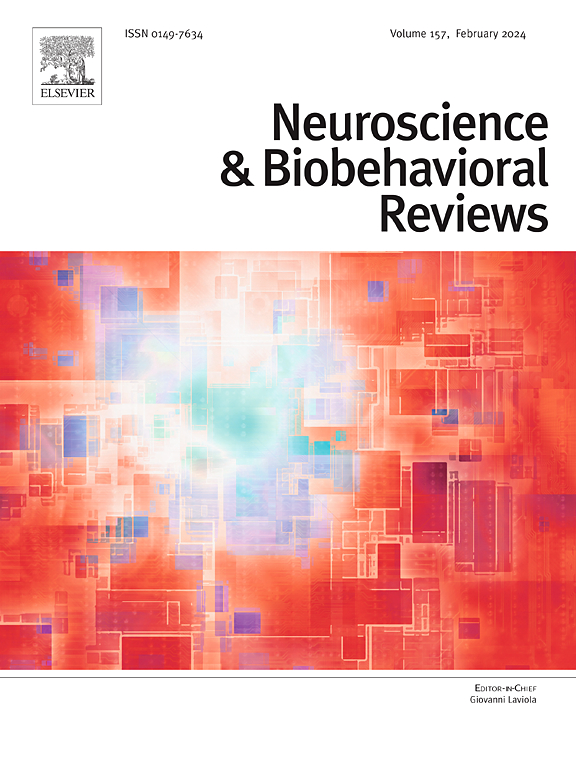Psychopathy and medial frontal cortex: A systematic review reveals predominantly null relationships
IF 7.5
1区 医学
Q1 BEHAVIORAL SCIENCES
引用次数: 0
Abstract
Theories have posited that psychopathy is caused by dysfunction in the medial frontal cortex, including ventromedial prefrontal cortex (vmPFC), anterior cingulate cortex (ACC), and dorsomedial prefrontal cortex (dmPFC). Recent reviews have questioned the reproducibility of neuroimaging findings within this field. We conducted a systematic review to describe the consistency of magnetic resonance imaging (MRI) findings according to anatomical subregion (vmPFC, ACC, dmPFC), experimental task, psychopathy assessment, study power, and peak coordinates of significant effects. Searches of PsycInfo and MEDLINE databases produced 77 functional and 24 structural MRI studies that analyzed the medial frontal cortex in relation to psychopathy in adult samples. Findings were predominantly null (85.4 % of 1573 tests across the three medial frontal regions). Studies with higher power observed null effects at marginally lower rates. Finally, peak coordinates of significant effects were widely dispersed. The evidence failed to support theories positing the medial frontal cortex as a consistent neural correlate of psychopathy. Theory and methods in the field should be revised to account for predominantly null neuroimaging findings.
精神变态与内侧额叶皮层:一项系统性回顾显示,两者之间的关系主要为空。
有理论认为,精神变态是由内侧额叶皮层功能障碍引起的,包括腹内侧前额叶皮层(vmPFC)、前扣带回皮层(ACC)和背内侧前额叶皮层(dmPFC)。近期的综述对该领域神经影像学研究结果的可重复性提出了质疑。我们进行了一项系统性综述,根据解剖亚区(vmPFC、ACC、dmPFC)、实验任务、精神变态评估、研究力量和显著效应的峰值坐标来描述磁共振成像(MRI)结果的一致性。通过对 PsycInfo 和 MEDLINE 数据库的检索,我们发现有 77 项功能性 MRI 研究和 24 项结构性 MRI 研究分析了成人样本中内侧额叶皮层与精神变态的关系。研究结果主要是无效的(在对三个内侧额叶区域进行的 1,573 次测试中占 85.4%)。功率较高的研究观察到的无效效应比例略低。最后,显著效应的峰值坐标非常分散。这些证据未能支持将内侧额叶皮层作为精神变态的一致神经相关因素的理论。该领域的理论和方法应加以修正,以解释主要为空的神经影像学研究结果。
本文章由计算机程序翻译,如有差异,请以英文原文为准。
求助全文
约1分钟内获得全文
求助全文
来源期刊
CiteScore
14.20
自引率
3.70%
发文量
466
审稿时长
6 months
期刊介绍:
The official journal of the International Behavioral Neuroscience Society publishes original and significant review articles that explore the intersection between neuroscience and the study of psychological processes and behavior. The journal also welcomes articles that primarily focus on psychological processes and behavior, as long as they have relevance to one or more areas of neuroscience.

 求助内容:
求助内容: 应助结果提醒方式:
应助结果提醒方式:


